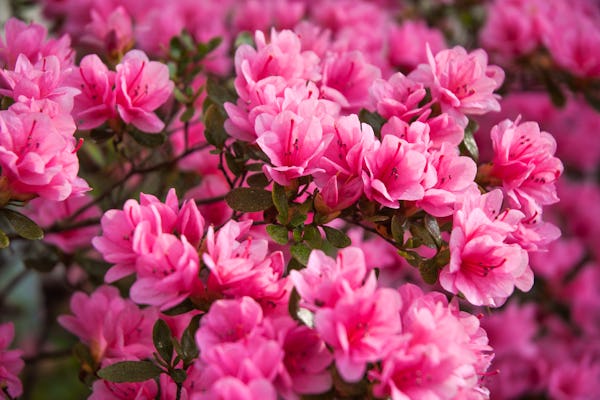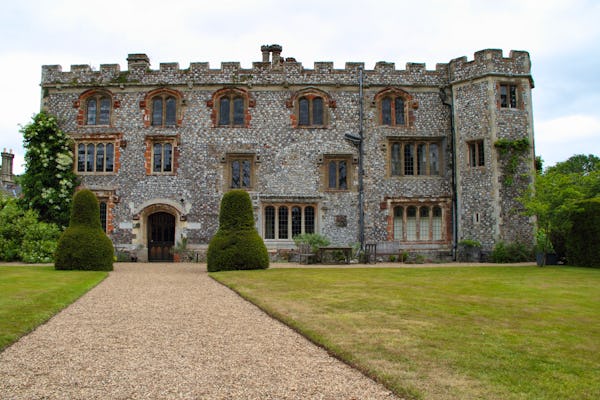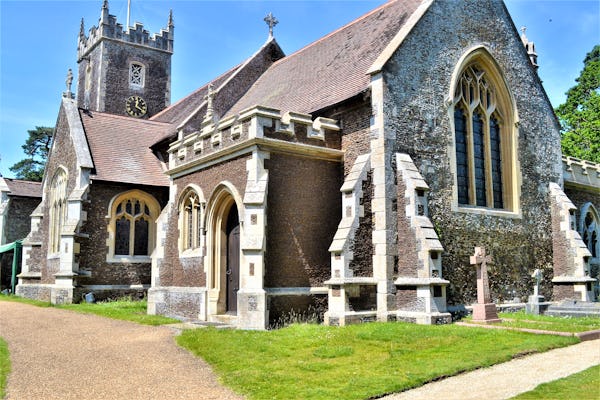Historic Homes and Gardens of Norfolk for Gardeners World
Journey to Norfolk on the Eastern coast of England and discover a world of beauty and relaxation on guided tours through Norfolk’s most captivating gardens and estates. Behold and witness the vast array of plants, trees, vistas and walks you will encounter during your stay. Walkways carpeted in hundreds of varieties of daffodils and snowdrops; exclusive tours through private gardens that boast unique styles, to discovering the medieval Mannington Hall known to be a ‘hidden gem’. Sit back and appreciate the history and detail of these stunning attractions whilst enjoying a hot cup of tea and biscuits.
Your Tour Includes
- 4 nights half board at the Holiday Inn Norwich North
- Coach transfers for our excursions
- Ploughmans' Lunch
- Morning tea and coffee
- Exclusive garden visits and talks with head gardeners
- Services of our experienced Tour Manager
Itinerary
Please choose your preferred 5 day itinerary
Make your own way to our hotel, where you meet our Tour Manager and enjoy a relaxing evening with dinner included.
Includes Dinner
Today we head to Hoveton Hall Gardens and take a guided tour of the gardens with its variety of plants, trees, vistas, and walks. First planted in the early 19th century, Hoveton Hall gardens have been given much time and thought as they have evolved over the years In springtime the grounds are carpeted with hundreds of different varieties of snowdrops and daffodils, some of which are very rare. Azaleas and rhododendrons take centre stage early summer with spectacular colours, then the following months, herbaceous plants and the kitchen gardens come to the fore, with manicured lawns and over 600 different plant varieties, some rare and unusual. Not to be missed is the restored 19th century iron glasshouse. The tour is followed by included mid-morning tea/coffee and homemade biscuits before time to explore the gardens at leisure. We next head to East Ruston Old Vicarage for an exclusive visit to the privately owned gardens. On arrival we enjoy an included Ploughman’s lunch. After lunch we will be joined by one of the garden owners, Alan Gray, who will provide an exclusive guided tour. Boasting many different styles of gardens including a rose garden, exotic garden, woodland garden, clematis walk and much more, there is an abundance of flora and fauna to enjoy and many a tale to tell about these exquisite gardens. Following the tour there is free time at leisure to explore the gardens further, before heading back to the hotel in the late afternoon. Dinner in the hotel this evening.
Includes Breakfast
Includes Dinner
Today’s visit takes us firstly to Mannington, which is often described as a ‘hidden gem’. The medieval manor with sur-rounding moat nestles in a hollow in the delightful wooded North Norfolk countryside. Purchased by the Walpole family in the 18th century from descendants of its 15th century builder, it remains a family home containing not only family portraits but myriad small treasures too. The gardens feature a wide variety of plants with trees and shrubs as well as the well-known rose collection. Long before it became fashionable, the gardens were run with wildlife in mind, including areas of wildflowers around the ruined church, lake, boardwalk, bird hide and arboretum. On arrival we enjoy tea/coffee and a short talk on the house and gardens by Lady Walpole before a guided tour of the gardens with the head gardener. This is followed by a short house tour with Lady Walpole before enjoying a light lunch. This afternoon we head to Blickling Estate where you are free to explore the house and gardens at your own leisurely pace. The Jacobean mansion sits right in the heart of the gardens and park. The Manor of Blickling is mentioned in the Doomsday book, and a Tudor house that once stood at Blickling is thought to be the birthplace of Anne Boleyn, due to her grandfather, Sir Geoffrey Boleyn, being one of the previous owners after purchasing the estate in 1452. There is plenty to explore inside, as you immerse yourself in the history of Blickling, from the Great Hall and the Long Gallery to the South Drawing Room. The gardens have plenty to explore: why not take a stroll on the acre with views of the lake, and enjoy the walled gardens and the parterre. Look for the two secret tunnels and head to the temple for good views down to the house. At the end of the afternoon, we return to the hotel for dinner this evening.
Includes Breakfast
Includes Dinner
Today we spend a leisurely day at Sandringham, where we will enjoy a guided tour of the gardens on arrival, with plenty of time to explore further before a self-guided visit of the house this afternoon. Sandringham was built in 1870 by the Prince and Princess of Wales, who later became King Edward VII and Queen Alexandra. Both Queen Alexandra and later Queen Mary were great collectors of objects d'art. Members of the Russian and European Royal Families were frequent guests at Sandringham House and brought gifts of enamel, silver and silver-gilt: Kaiser Wilhelm I of Germany gave a fine Dresden porcelain chandelier and mirror frame. The walls are hung with family portraits by leading contemporary court painters: Heinrich von Angeli, Sir Luke Fildes, Franz Winterhalter and Edward Hughes. An important collection of oriental arms and armour is housed at Sandringham House, brought back from the Far East and India in 1876. Sandringham Gardens displays a densely planted shrubbery with a shady woodland walk was instigated by Her Majesty in the late 1960s. A collection of rhododendron, camellia and magnolia trees were brought up from Windsor were planted to create more interest, shelter and privacy in the garden. Much of the planting has now matured and this, along with a wide range of rare and unusual trees, provides a spectacular display for those who enjoy the shape, colour and texture of leaves, stems and bark though the seasons. Created by Geoffrey Jelicoe in 1947 for King George VI, the formal enclosed areas of garden are informally planted in a cottage garden style and are usually at their best in late July where they act as a haven for bees and butterflies. On the west side, the house overlooks a large expanse of lawn, once the site of an elaborate series of colourful formal flower beds and pathways, these were ploughed up during the Second World War to make way for crops as part of the dig for victory campaign. In recent years these large expanses of lawns have proved useful for large garden parties including one to celebrate Her Majesty’s Diamond Jubilee. Throughout the garden areas, informal lawns are dotted with trees of all ages, including an oak tree planted by Queen Victoria and a giant redwood tree planted by Princess Christian of Denmark. The oldest tree in the garden is a veteran oak standing beside the upper lake which is said to be over 800 years old. Two ornamental lakes were landscaped in the 1880s for King Edward VII by James Pulham, a landscape gardener who specialised in stonework and the creation of grottoes, rock faces and stoneware. Natural springs feed the lake, and an ornamental stream planted with moisture-loving plants meanders through meadow areas. This part of the garden is managed in a more naturalistic style to encourage a wide range of wildlife. Enjoy dinner at the hotel this evening.
Includes Breakfast
Includes Dinner
After breakfast you are free to check out of our hotel and depart at leisure; you could even take the opportunity to explore some more of Norfolk.
Includes Breakfast




